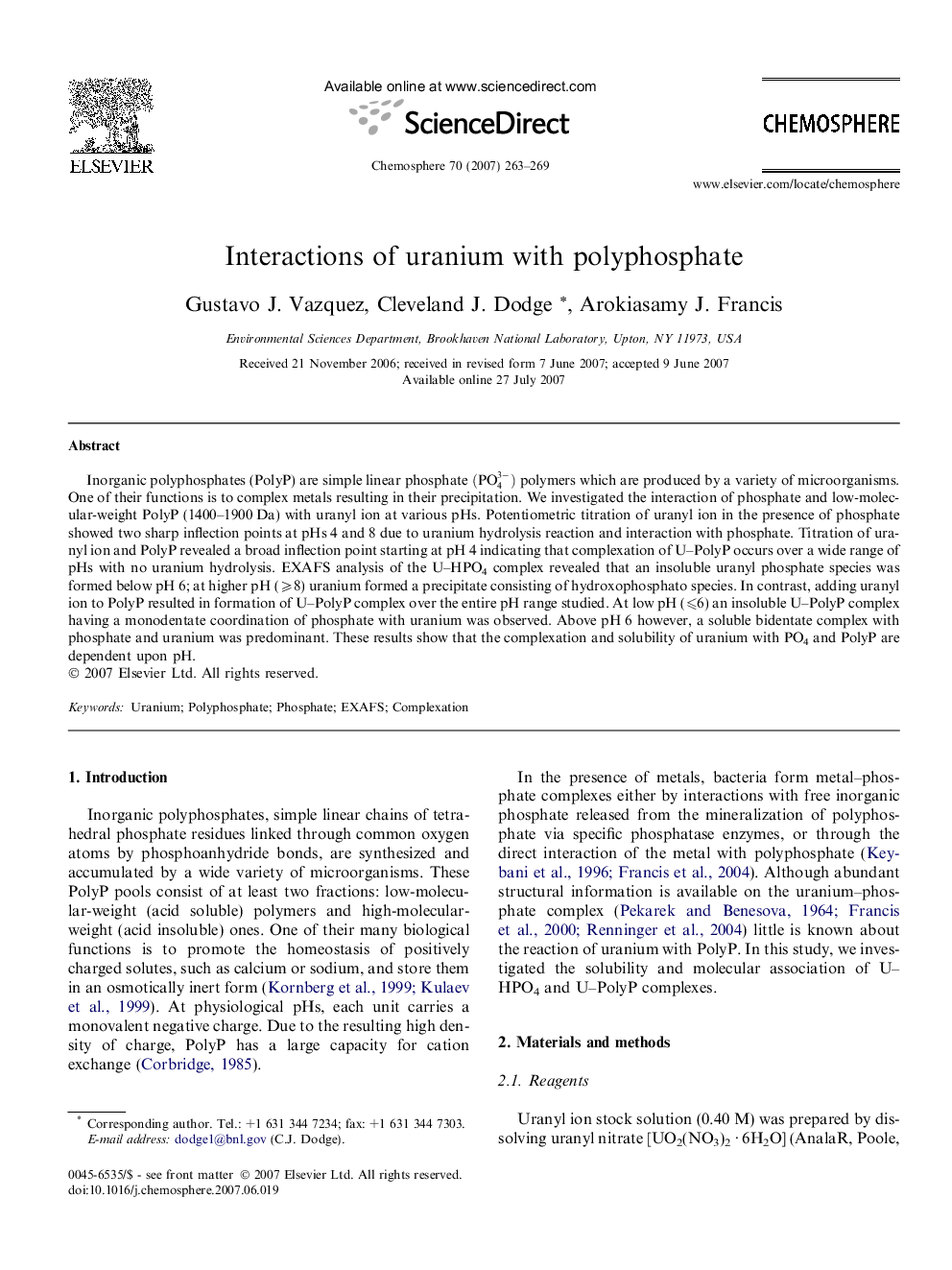| Article ID | Journal | Published Year | Pages | File Type |
|---|---|---|---|---|
| 4414794 | Chemosphere | 2007 | 7 Pages |
Inorganic polyphosphates (PolyP) are simple linear phosphate (PO43-) polymers which are produced by a variety of microorganisms. One of their functions is to complex metals resulting in their precipitation. We investigated the interaction of phosphate and low-molecular-weight PolyP (1400–1900 Da) with uranyl ion at various pHs. Potentiometric titration of uranyl ion in the presence of phosphate showed two sharp inflection points at pHs 4 and 8 due to uranium hydrolysis reaction and interaction with phosphate. Titration of uranyl ion and PolyP revealed a broad inflection point starting at pH 4 indicating that complexation of U–PolyP occurs over a wide range of pHs with no uranium hydrolysis. EXAFS analysis of the U–HPO4 complex revealed that an insoluble uranyl phosphate species was formed below pH 6; at higher pH (⩾8) uranium formed a precipitate consisting of hydroxophosphato species. In contrast, adding uranyl ion to PolyP resulted in formation of U–PolyP complex over the entire pH range studied. At low pH (⩽6) an insoluble U–PolyP complex having a monodentate coordination of phosphate with uranium was observed. Above pH 6 however, a soluble bidentate complex with phosphate and uranium was predominant. These results show that the complexation and solubility of uranium with PO4 and PolyP are dependent upon pH.
